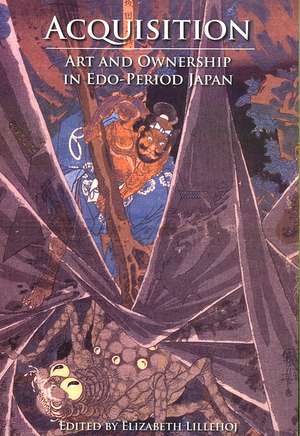Acquisition: Art and Ownership in Edo-Period Japan
Autor Elizabeth Lillehojen Limba Engleză Paperback – 24 aug 2007
Preț: 338.11 lei
Nou
Puncte Express: 507
Preț estimativ în valută:
64.71€ • 67.04$ • 54.00£
64.71€ • 67.04$ • 54.00£
Carte indisponibilă temporar
Doresc să fiu notificat când acest titlu va fi disponibil:
Se trimite...
Preluare comenzi: 021 569.72.76
Specificații
ISBN-13: 9781891640506
ISBN-10: 189164050X
Pagini: 196
Dimensiuni: 176 x 253 x 14 mm
Greutate: 0.45 kg
Editura: Floating World Editions
ISBN-10: 189164050X
Pagini: 196
Dimensiuni: 176 x 253 x 14 mm
Greutate: 0.45 kg
Editura: Floating World Editions
Descriere
This volume considers how and why people bought, sold, donated, and received works of art during Japan's Edo period (1600-1868), when opportunities to obtain art increased as audiences for art expanded. Many urbanites enjoyed money in their pockets and access to information, which allowed them to emerge as influential consumers. With this, patronage of art by a small cohort of powerful and wealthy individuals gave way to support of art by a broader audience, and concurrently, exchanges between those making art and those acquiring art developed into new and dynamic interactions. The study of Edo-period art acquisition is comparatively new, but important to those seeking greater knowledge about art objects, as well as many others looking to understand the social life of visual forms. Some contributors to this volume examine broad themes like art and the marketplace, or art and political dissent; others explore cases of ownership by ranking officials, imperial ladies, temple abbots, and business entrepreneurs. As a whole, the volume allows for a deeper understanding of Edo-period acquisition practices, as well as a fuller comprehension of the vital connections between Japanese art and its audiences.
